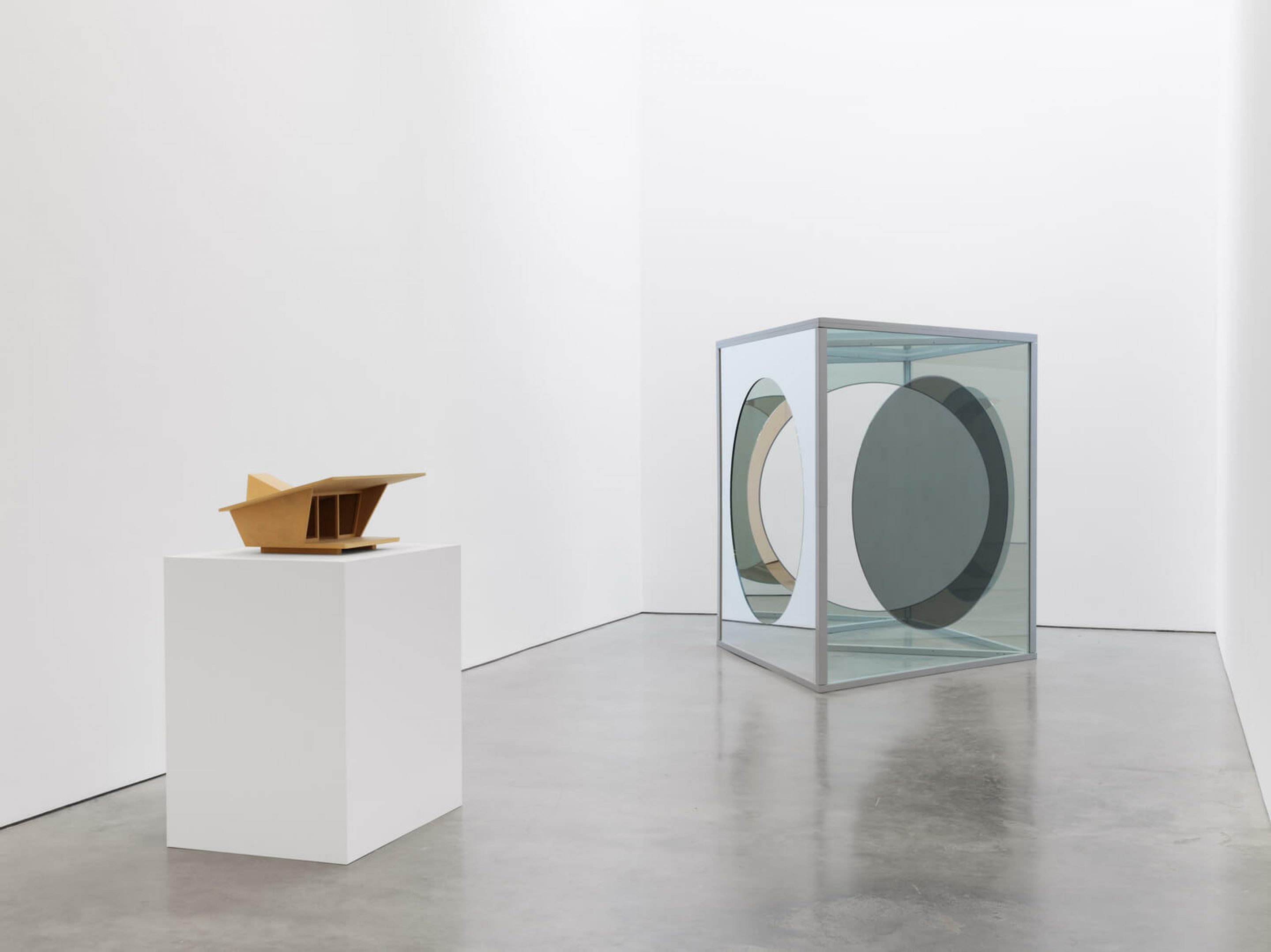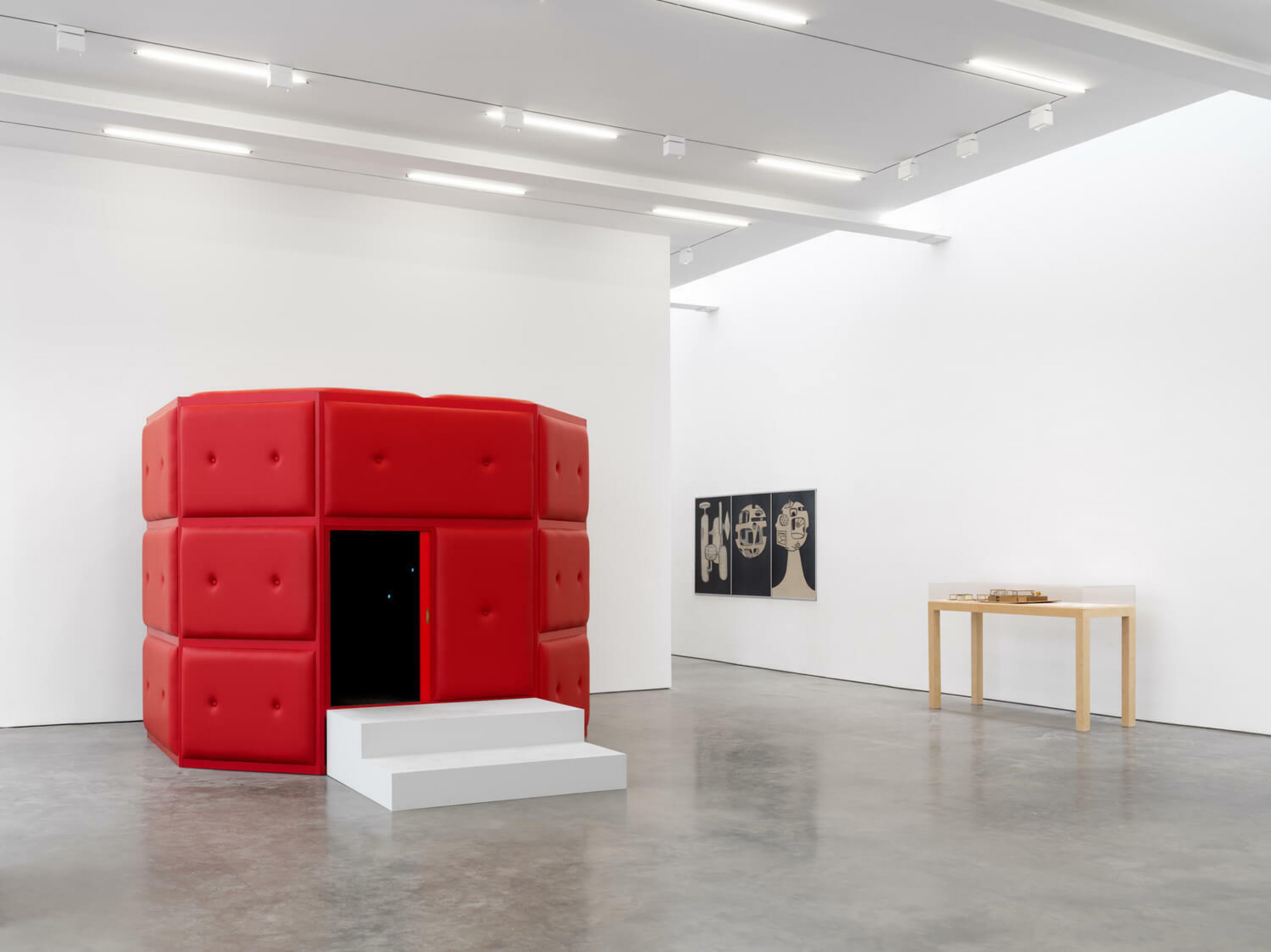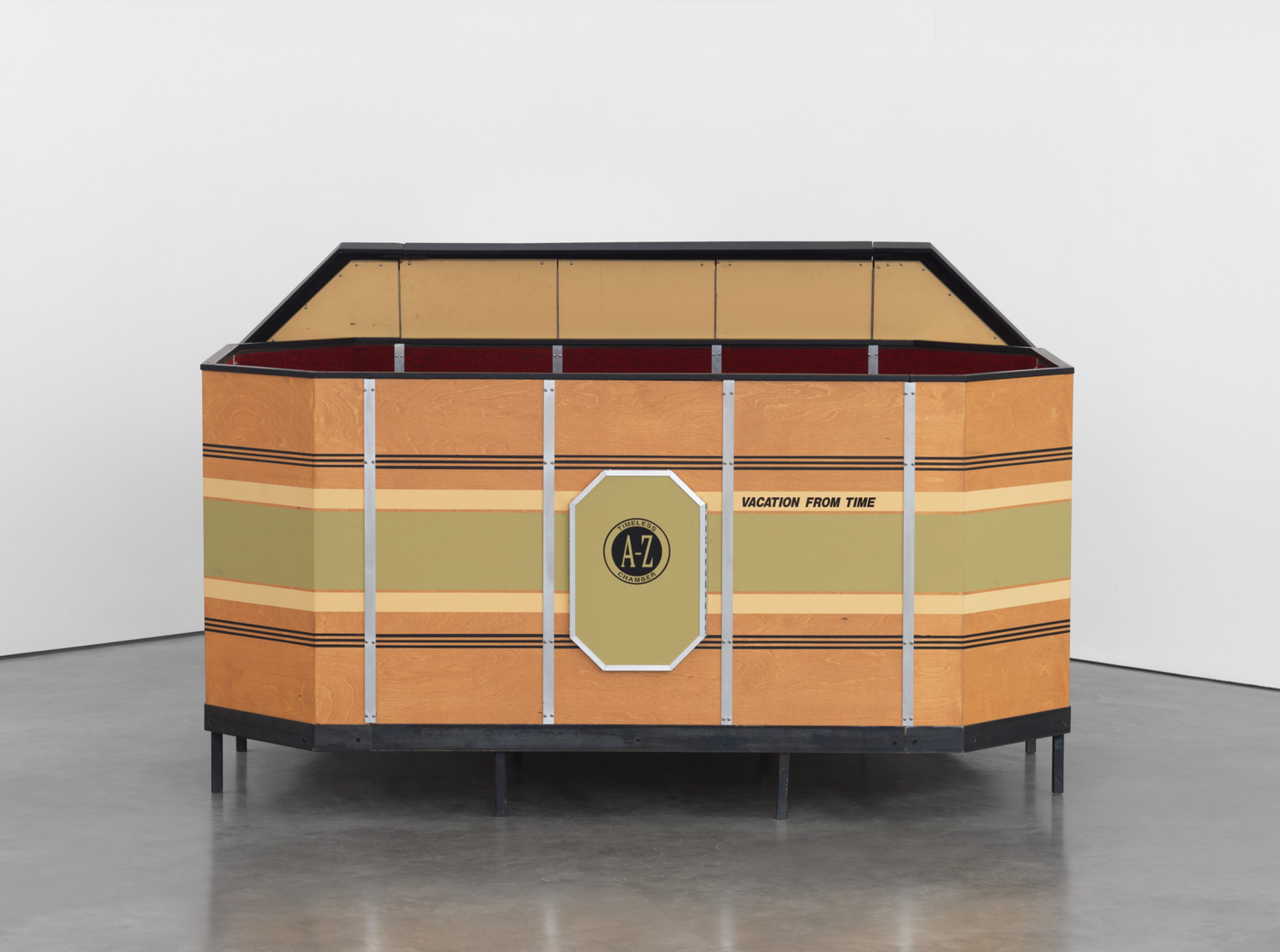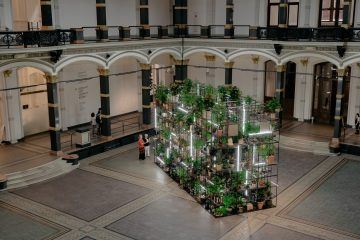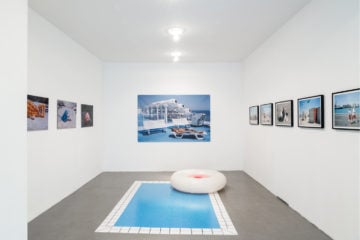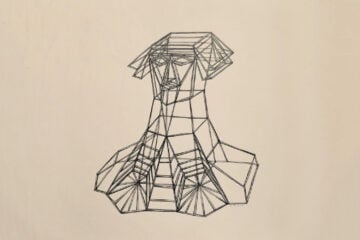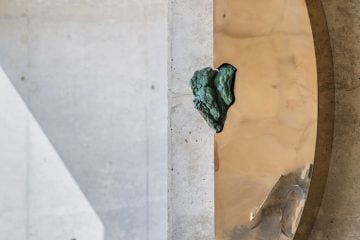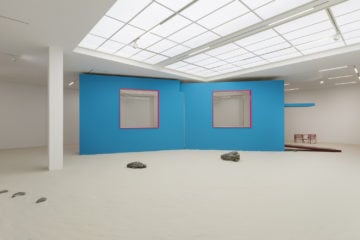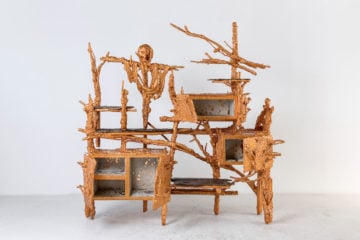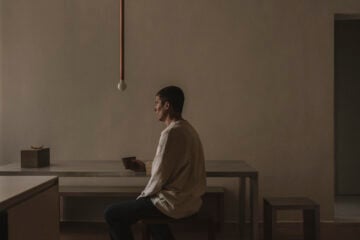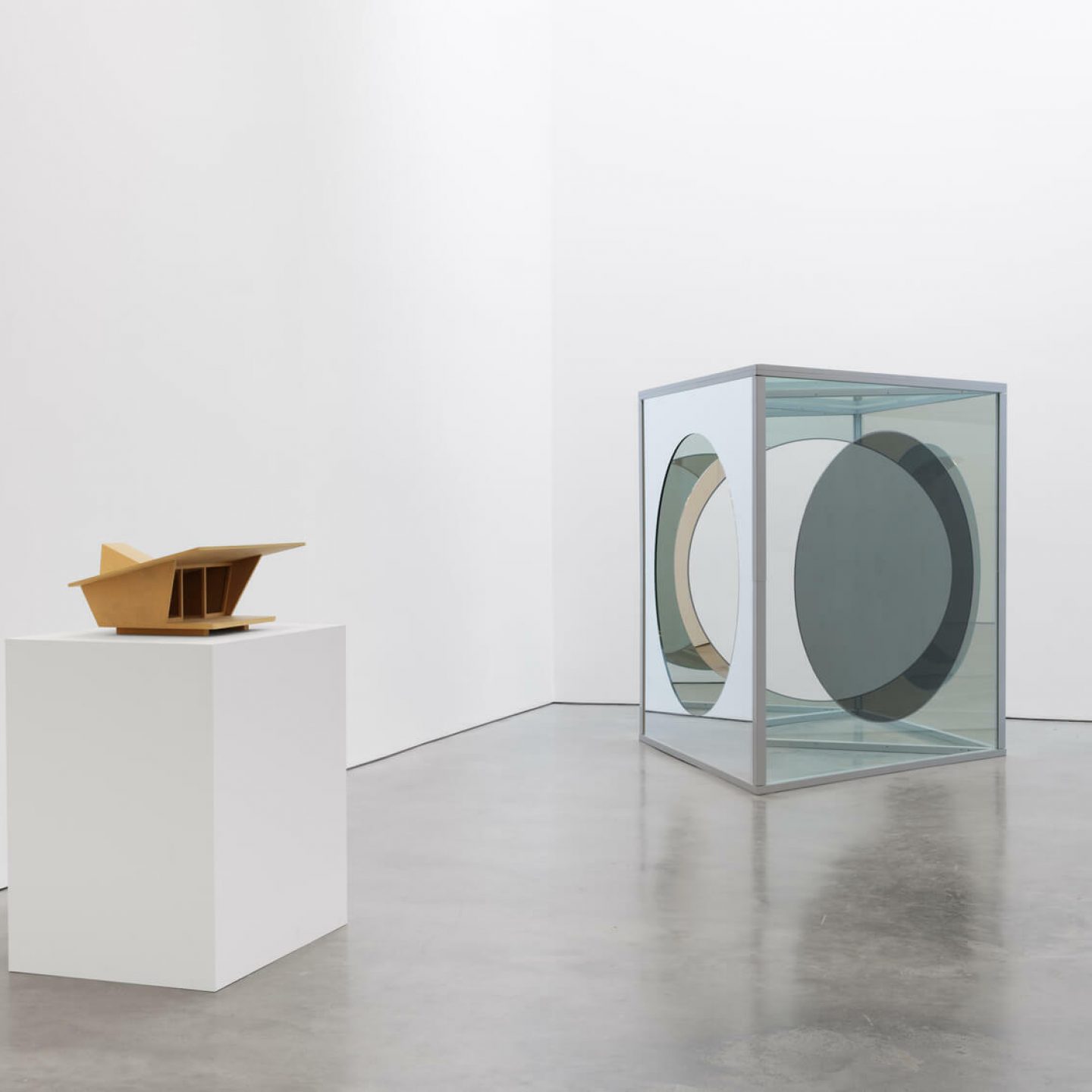
With Pavilions, Art And Architecture Merge To Provide Poetic Ground For Adult Play
- Name
- Lisson Gallery
- Project
- Pavilions
- Words
- Steph Wade
Right now, New York’s Lisson Gallery presents a group exhibition with some of the most prestigious names in art, each engaging with various forms and concepts surrounding the use of pavilions. The pieces shown in Pavilions blend abstract, minimal, and architectural forms into beautiful small and large-scale works of art, exploring themes of individual memory, identity, and experience, and encouraging playful interaction.
From eliciting a grounding feeling to being built in response to socio-political issues, pavilions—whether temporary or permanent—provide artists and designers the opportunity to explore with varying materials, forms, and themes. “Pavilions illustrates the disparate artistic approaches to this subject matter, ranging from physically-realized structures to designs conceived as ideas or sketches,” explains a statement from the gallery. Though the works in the exhibition vary in medium and scale, all find their likeness in centering around perception, reflection, or physical experiences of how the body inhabits the space where the work is positioned. With an all-star lineup, the show features recent and historic works by artists including Dan Graham, Anish Kapoor, Tatsuo Miyajima, Laure Prouvost, Pedro Reyes, and more.
Pavilions blends abstract, minimal, and architectural forms into beautiful small and large-scale works of art
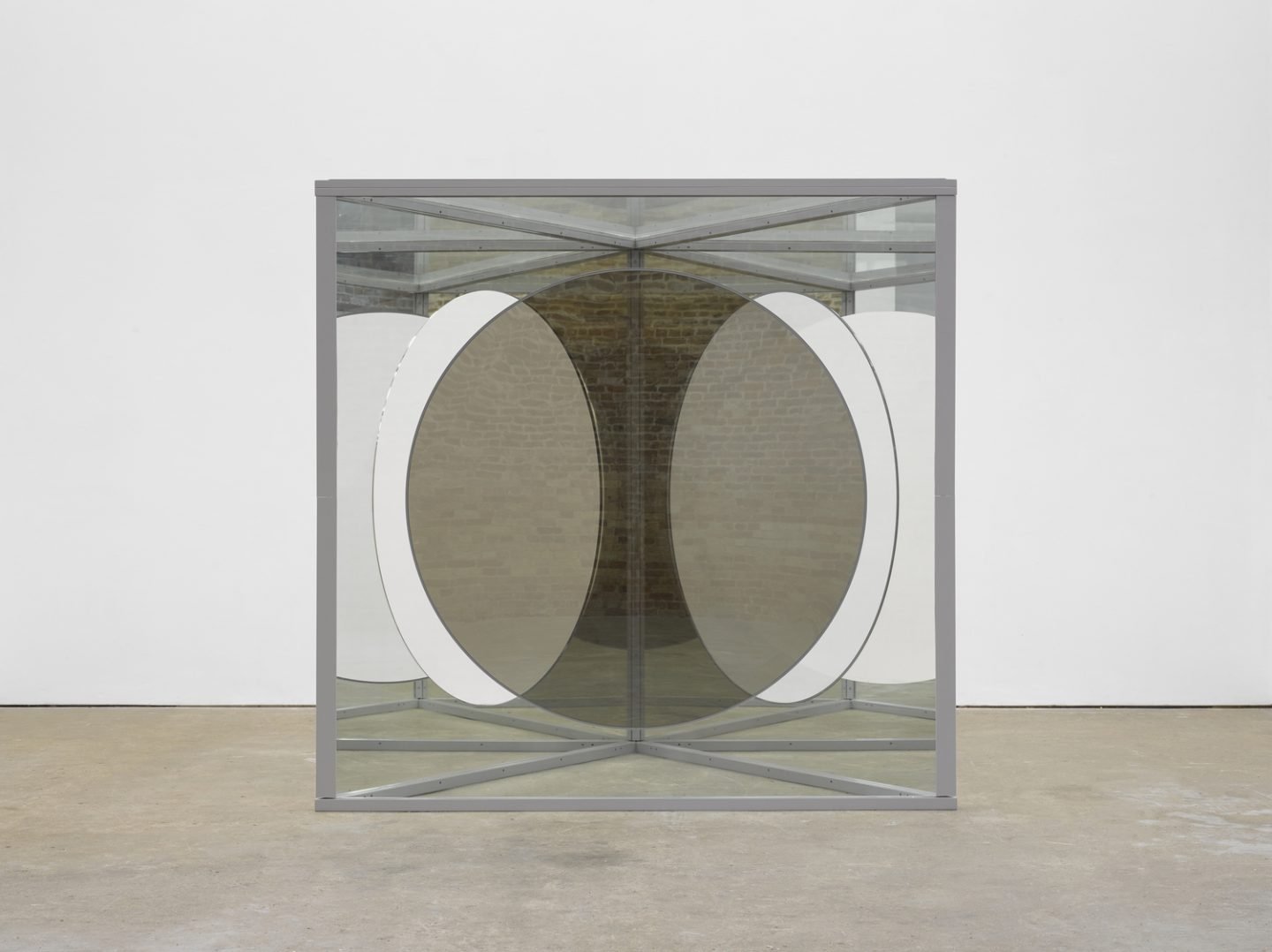
Dan Graham, Triangular solid with circular cut-outs - variation S, 2017. Two-way mirror glass, glass and stainless steel 206.2 x 209.4 x 181.4 cm 81 1/8 x 82 3/8 x 71 3/8 in © Dan Graham. Courtesy Lisson Gallery
When thinking of a pavilion, there is something in the theme of illusion in a physical space that is intriguing. Is it a miniature piece of architecture? A sculpture? Or a vessel for innocent exploration? The life-sized, site-specific works in the exhibition are all of these things and something more. A prominent piece by the seminal artist Dan Graham piques attention on this point: ‘Triangular solid with circular cut-outs – variation S’ (2017) uses the reflective glass of skyscrapers to create an intriguing, gazebo-like construction.
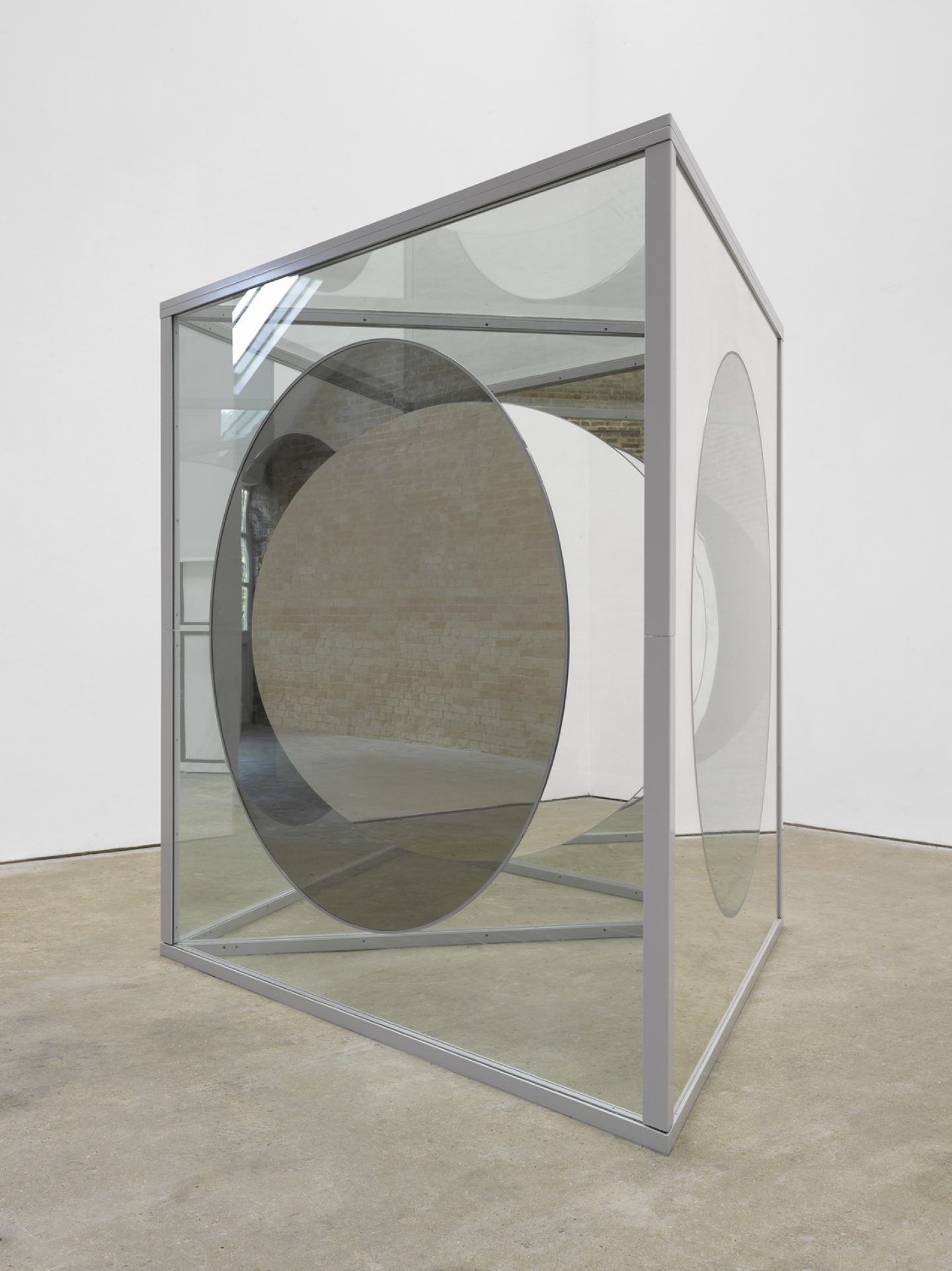
Dan Graham, Triangular solid with circular cut-outs - variation S, 2017. Two-way mirror glass, glass and stainless steel 206.2 x 209.4 x 181.4 cm 81 1/8 x 82 3/8 x 71 3/8 in © Dan Graham. Courtesy Lisson Gallery
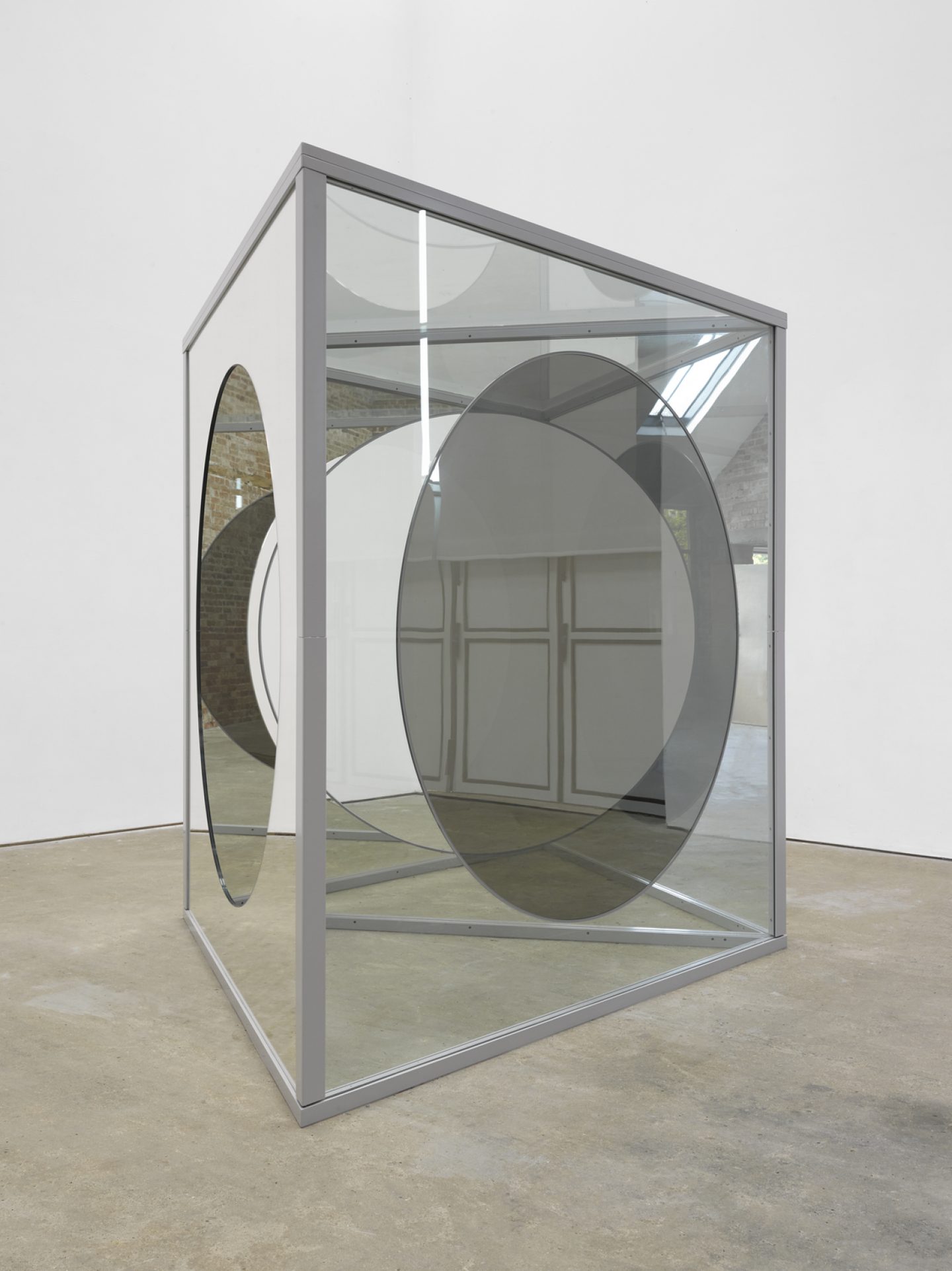
Dan Graham, Triangular solid with circular cut-outs - variation S, 2017. Two-way mirror glass, glass and stainless steel 206.2 x 209.4 x 181.4 cm 81 1/8 x 82 3/8 x 71 3/8 in © Dan Graham. Courtesy Lisson Gallery
Graham, who is about to turn 80 years old, has spent the last fifty years tracing the connection between architectural environments and the people who inhabit them. His minimalist pavilions have often been described as a critique on the proliferation of the skyscrapers built en-masse in the 1970s and ’80s. “I’m making fun of corporate architecture, by using variations of these structures to create fun houses for children,” Graham explains to us over the phone. “My pavilions are always a kind of two-way mirror,” he goes on to continue, “which is both transparent and reflective simultaneously, and it changes as the sunlight changes.”
From eliciting a grounding feeling to being built in response to socio-political issues, pavilions provide artists the opportunity to explore
With this work, reality sits in juxtaposition of two opposing ends: what is outside versus inside, and what is virtual versus real—each coalesce in the reflection of the mirror. “The architecture references Chinese garden moon gates and the artist’s conceptual entranceway offers the viewer a sense of self in space, while also removing all corporal bonds, as physical reality and reflection become indistinct,” Simantov notes. Graham started out his artistic career with writing, moving through language and then to photography and performance art, to now creating built forms like sculptures and installations. Over the years, he has witnessed the changing role of the places we go to for leisure. “Sculpture gardens are the new amusement parks,” he quips. “I’m interested in the way they’re used by the public.”
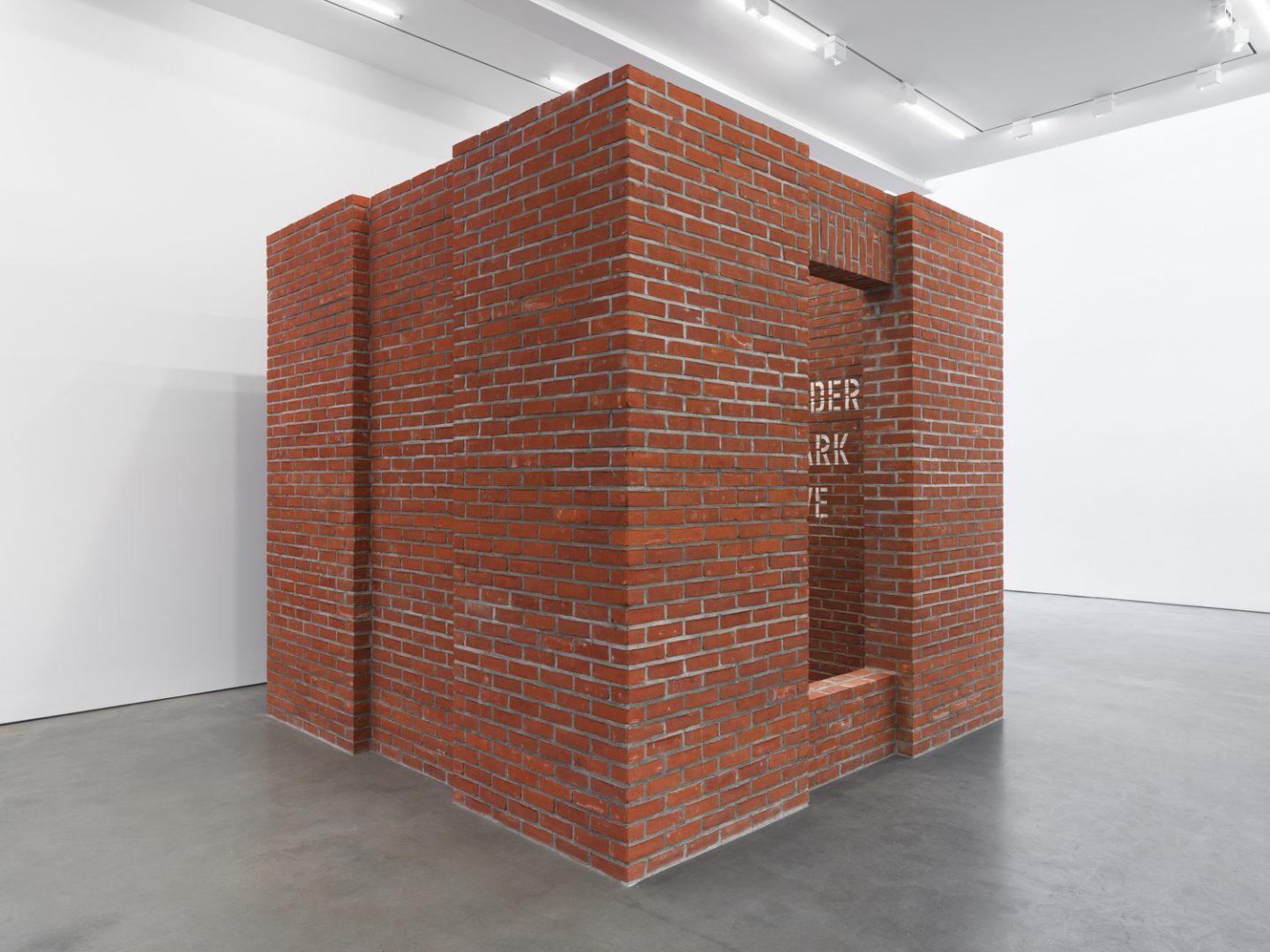
Per Kirkeby and Lawrence Weiner , Untitled (TORN ASUNDER WITH A SPARK FROM ABOVE), 2014 Bricks and mortar 320 x 320 x 320 cm 126 x 126 x 126 in © Per Kirkeby. Courtesy Lisson Gallery
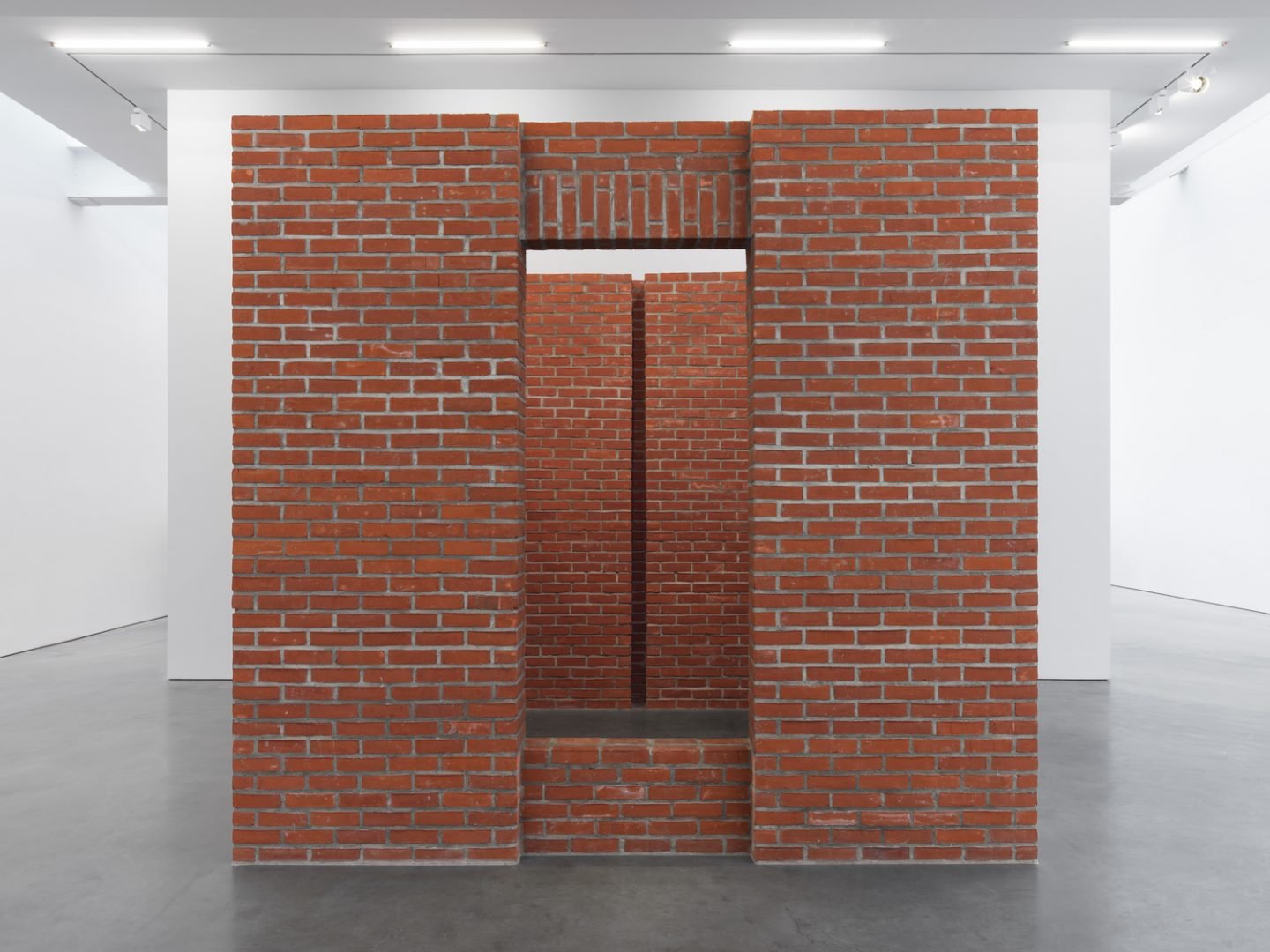
Per Kirkeby and Lawrence Weiner , Untitled (TORN ASUNDER WITH A SPARK FROM ABOVE), 2014 Bricks and mortar 320 x 320 x 320 cm 126 x 126 x 126 in © Per Kirkeby. Courtesy Lisson Gallery
Public interaction is further fostered in Pavilions with ‘Untitled (Torn Asunder With a Spark from Above (2014)’, a four-walled brick work conceived by Danish artist Per Kirkeby and American conceptualist Lawrence Weiner over 30 years ago. Weighing 30 tons and built with over 6,400 bricks, Kirkeby’s angular building houses Weiner’s signature text-based work that references an old tree that is torn apart by lightning. As Lisson writes, “words, matter, and space overlap inside the monumental construction.”
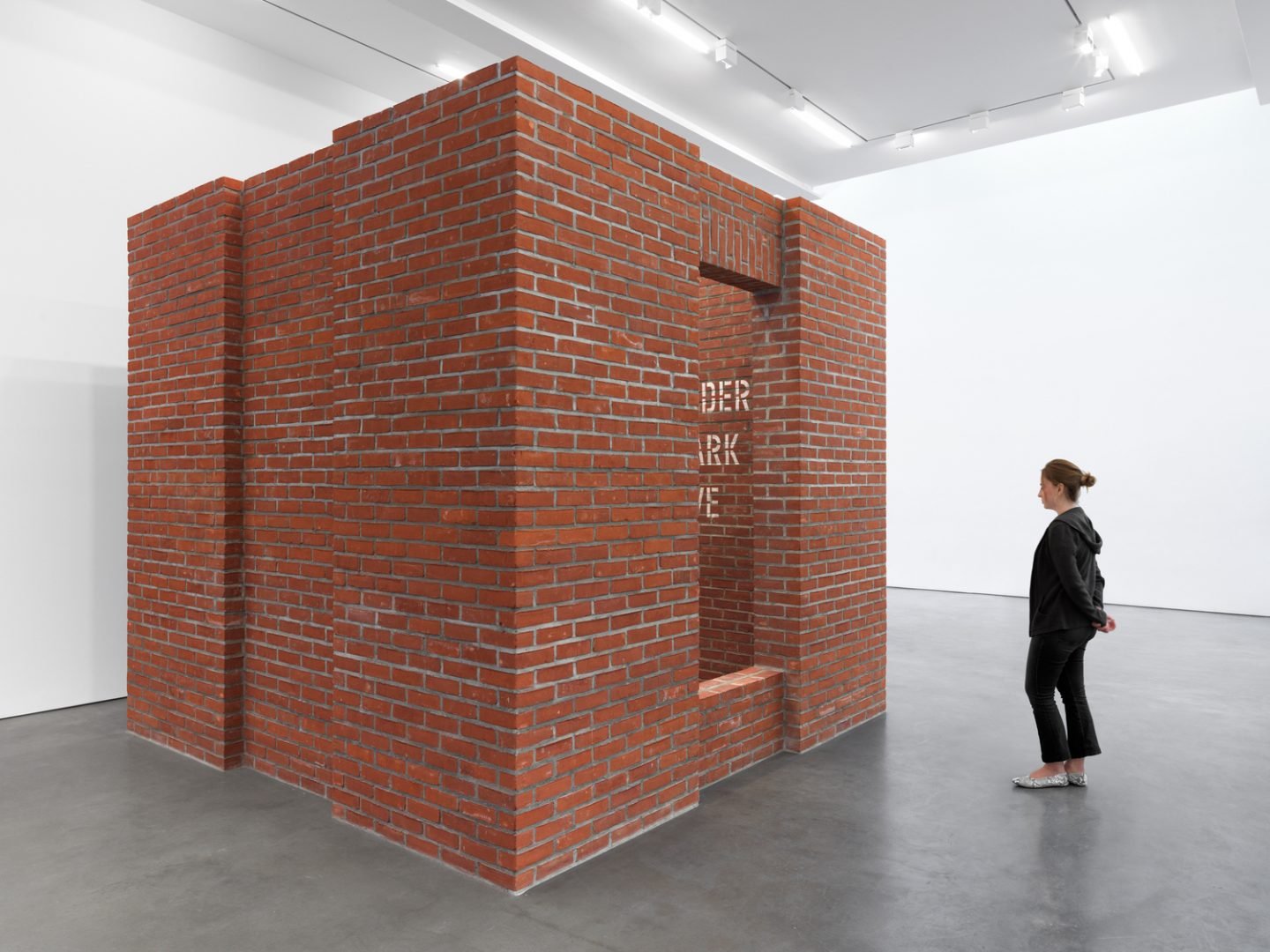
Per Kirkeby and Lawrence Weiner , Untitled (TORN ASUNDER WITH A SPARK FROM ABOVE), 2014 Bricks and mortar 320 x 320 x 320 cm 126 x 126 x 126 in © Per Kirkeby. Courtesy Lisson Gallery
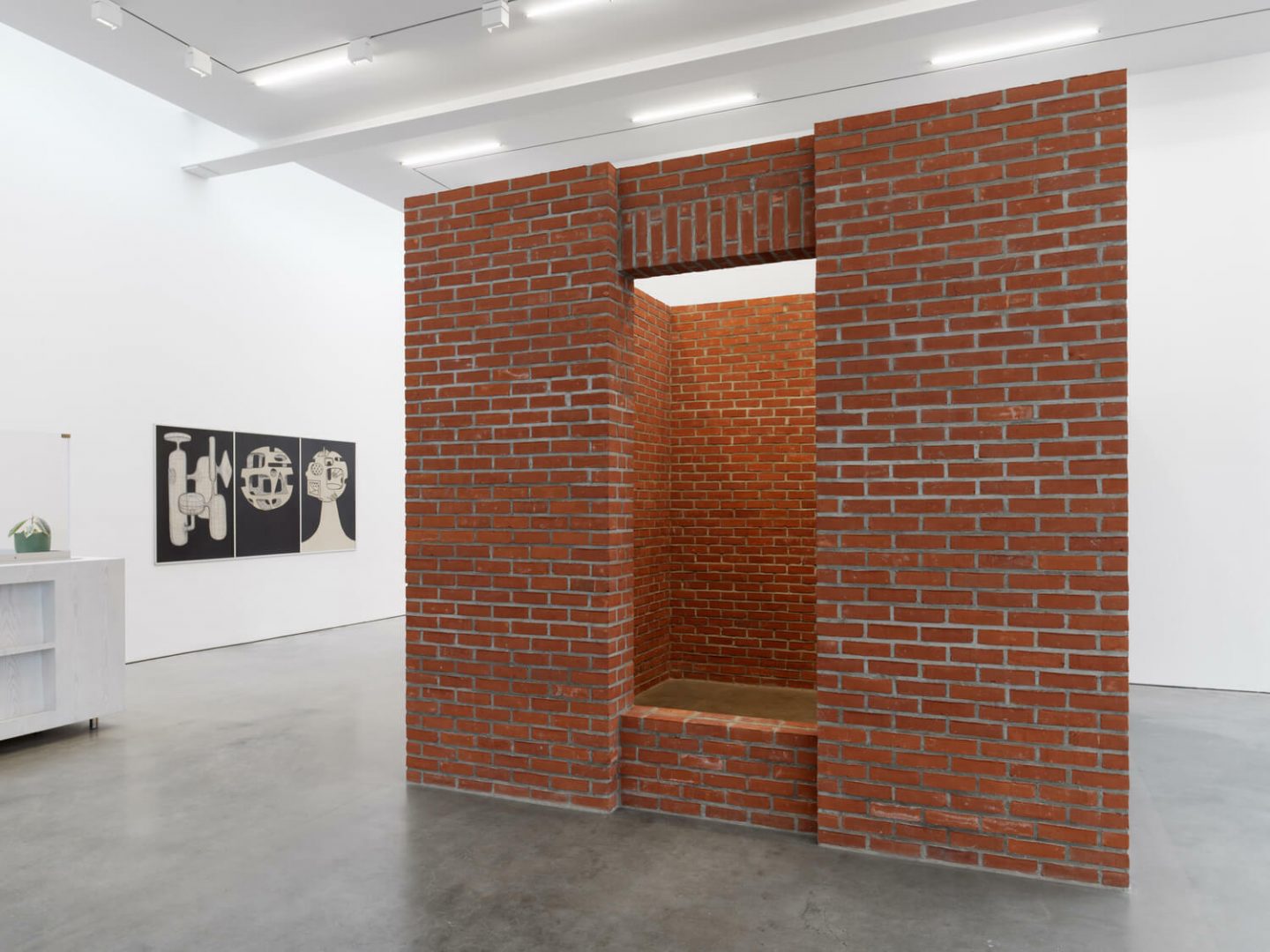
Per Kirkeby and Lawrence Weiner , Untitled (TORN ASUNDER WITH A SPARK FROM ABOVE), 2014 Bricks and mortar 320 x 320 x 320 cm 126 x 126 x 126 in © Per Kirkeby. Courtesy Lisson Gallery
Another pavilion that provokes inquisitorial visitor engagement is Japanese Sculptor Tatsuo Miyajima’s ‘Life Palace (tea room)’, (2013). With a red exterior that appears like large, squishy Lego blocks, the piece’s hypnotic interior consists of a domed constellation of blue lights, with numbers glowing and blinking in the darkened space. “Presented in a room by itself, this creates a meditative chamber where visitors can bathe in the blue glow of the LED counters,” Lisson explains. “These ‘gadgets’ count down from nine to one, representing the human life cycle as illustrated in Buddhist teaching. In this tea room pavilion, the artist invites visitors to drink time.”
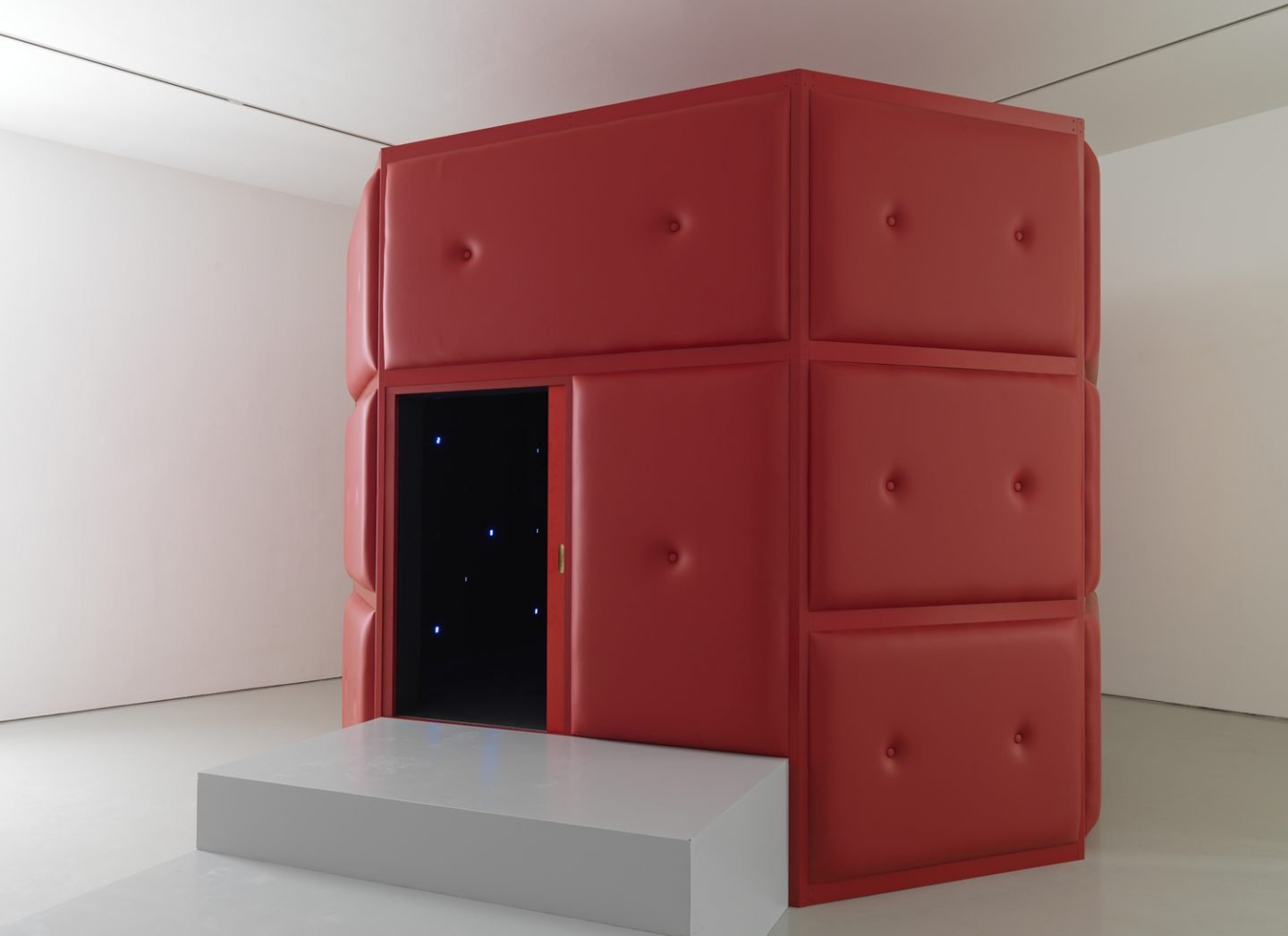
Tatsuo Miyajima , Life Palace (tea room), 2013 L.E.D., IC, microcomputer by Ikegami program, wood, steel, passive sensor, electric wire, LED type; Life G-BL 152 pieces 258.8 x 321.6 x 321.6 cm 101 7/8 x 126 1/2 x 126 1/2 in © Tatsuo Miyajima. Courtesy Lisson Gallery
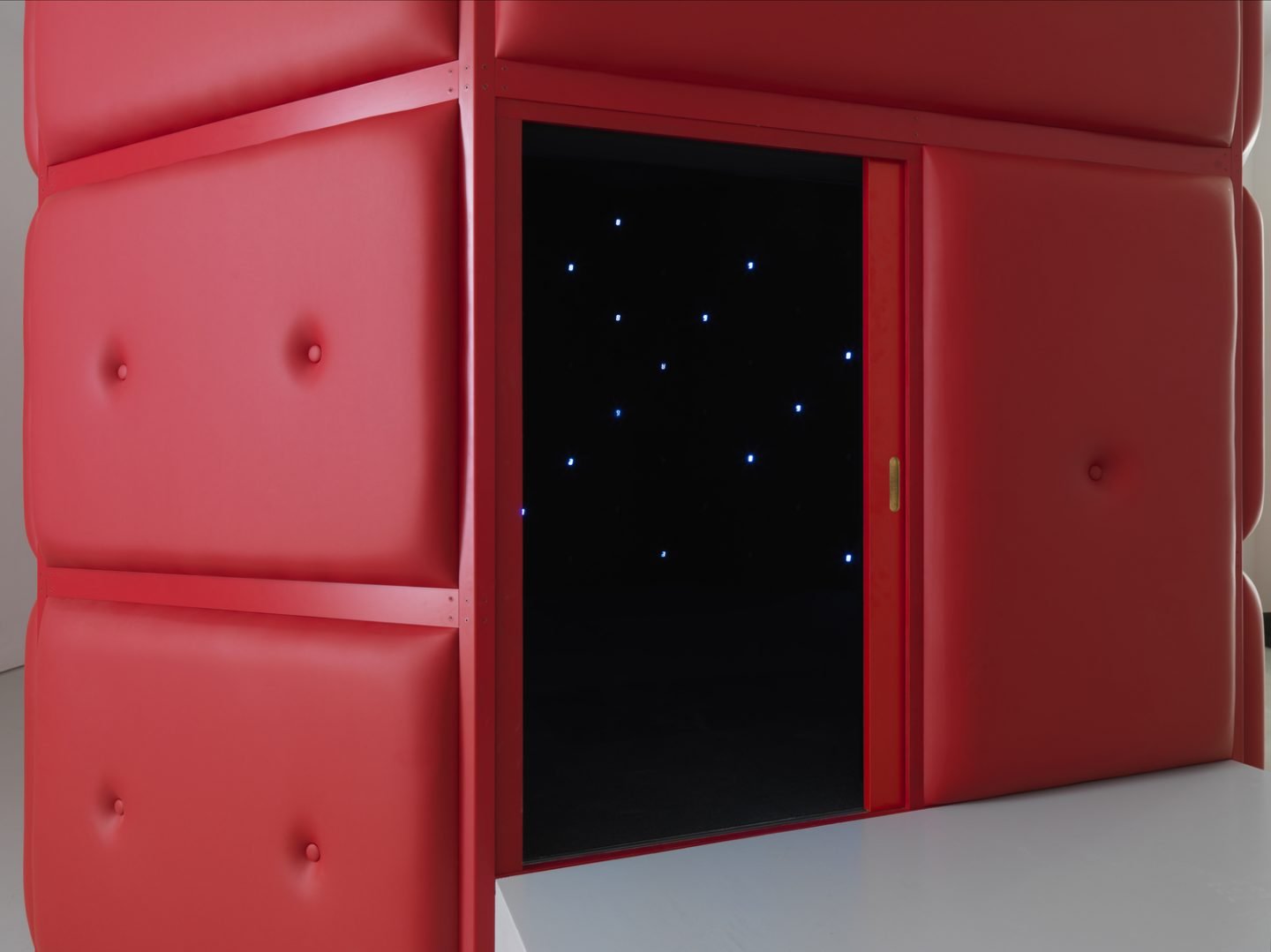
Tatsuo Miyajima , Life Palace (tea room), 2013 L.E.D., IC, microcomputer by Ikegami program, wood, steel, passive sensor, electric wire, LED type; Life G-BL 152 pieces 258.8 x 321.6 x 321.6 cm 101 7/8 x 126 1/2 x 126 1/2 in © Tatsuo Miyajima. Courtesy Lisson Gallery
Continuing the ever-intriguing concept of time, American artist Andrea Zittel’s pavilion ‘A-Z Timeless Chamber: Model 004’ is a clever investigation into the fact that time is a social construct that none of us can truly understand. The isolation chamber, if one were to enter, is meant to provide a small, physical environment in which to experience timelessness. The irony, of course, is that to give someone freedom from time would require a limitation on something else, such as space. Such is the ephemeral and pervasive nature of time.
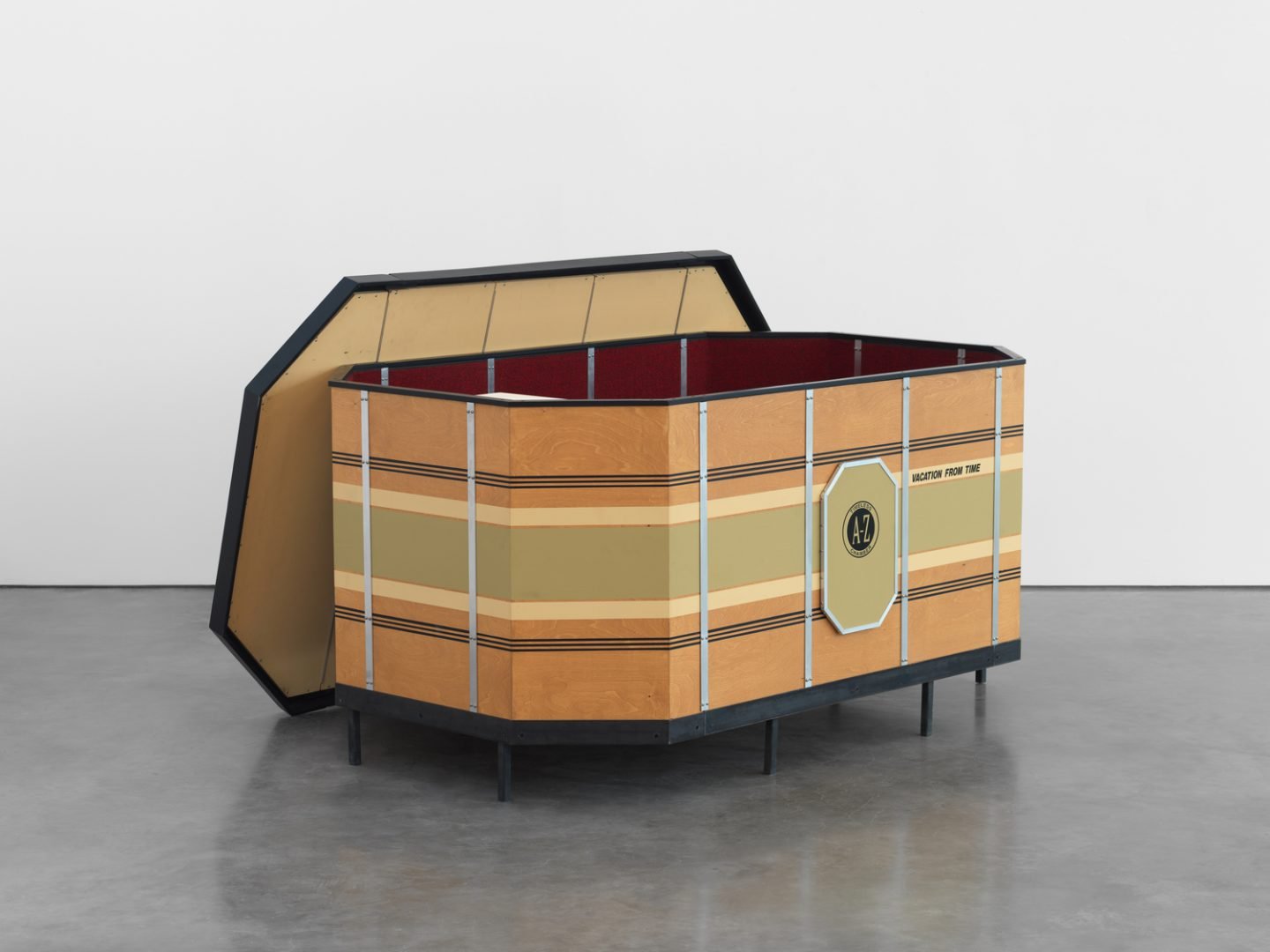
Andrea Zittel , A-Z Timeless Chamber: Model 004, 2000 . Birch, steel, carpet, aluminum, paint, vinyl adhesive 104.1 x 210.8 x 135.3 cm 41 x 83 x 53 1/4 in © Andrea Zittel. Courtesy Lisson Gallery

Andrea Zittel , A-Z Timeless Chamber: Model 004, 2000. Birch, steel, carpet, aluminum, paint, vinyl adhesive 104.1 x 210.8 x 135.3 cm 41 x 83 x 53 1/4 in © Andrea Zittel. Courtesy Lisson Gallery
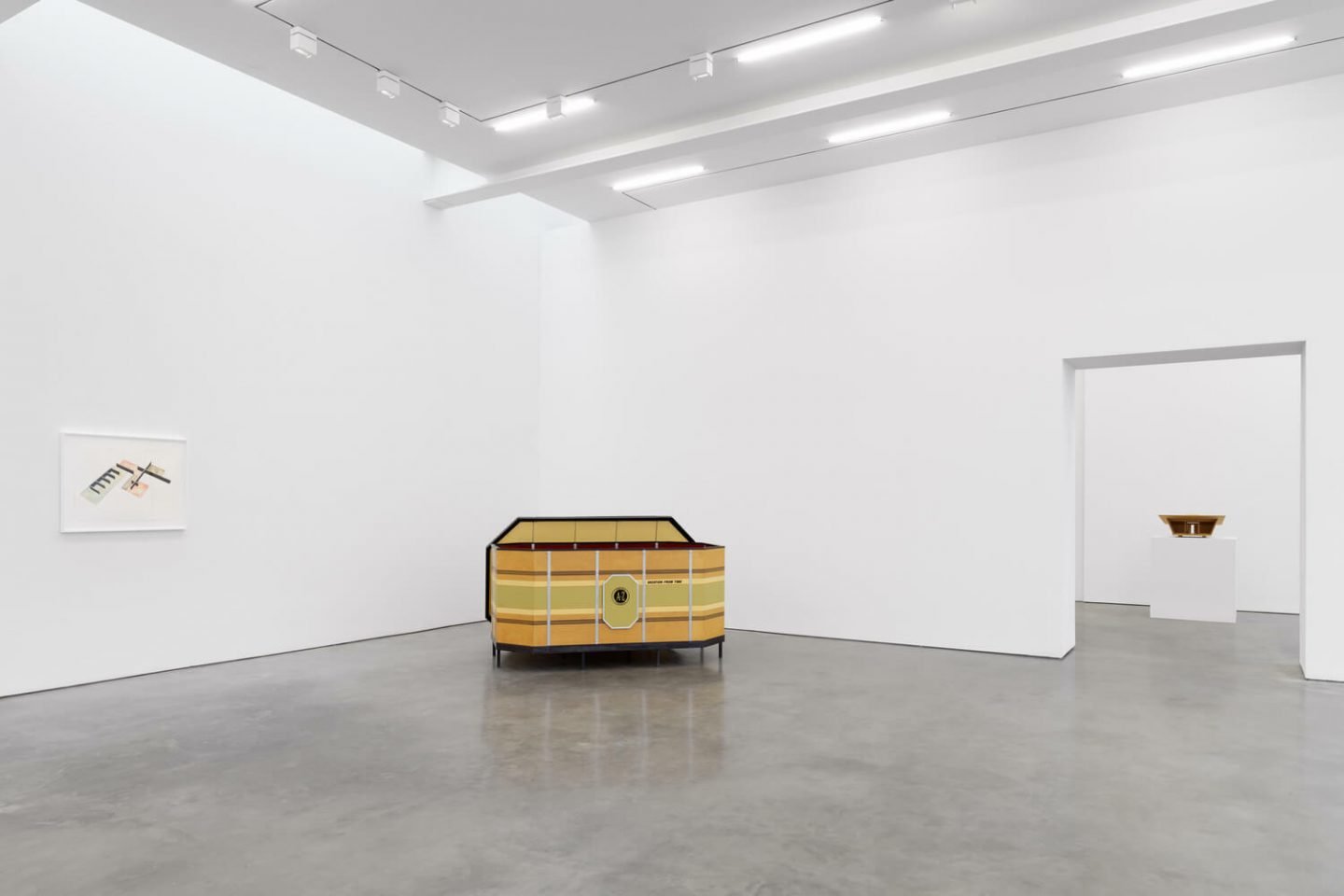
Andrea Zittel , A-Z Timeless Chamber: Model 004, 2000. Birch, steel, carpet, aluminum, paint, vinyl adhesive 104.1 x 210.8 x 135.3 cm 41 x 83 x 53 1/4 in © Andrea Zittel. Courtesy Lisson Gallery
Finally, esteemed British-Indian sculptor Sir Anish Kapoor features in the exhibition with a series of architectural models, offering a preview of some of his most ambitious forthcoming and unrealized projects. Known for his enormous installations in public spaces, often with polished surfaces and warping forms, these smaller works on display mark a more intimate look at the vision behind his colossal designs. With tiny human figurines demonstrating scale, the models displayed in Pavilions highlight Kapoor’s epic talent in blending sculpture and construction design together, while exploring conceptual themes relevant to his prolific career: like imagination, perception, and possibility.
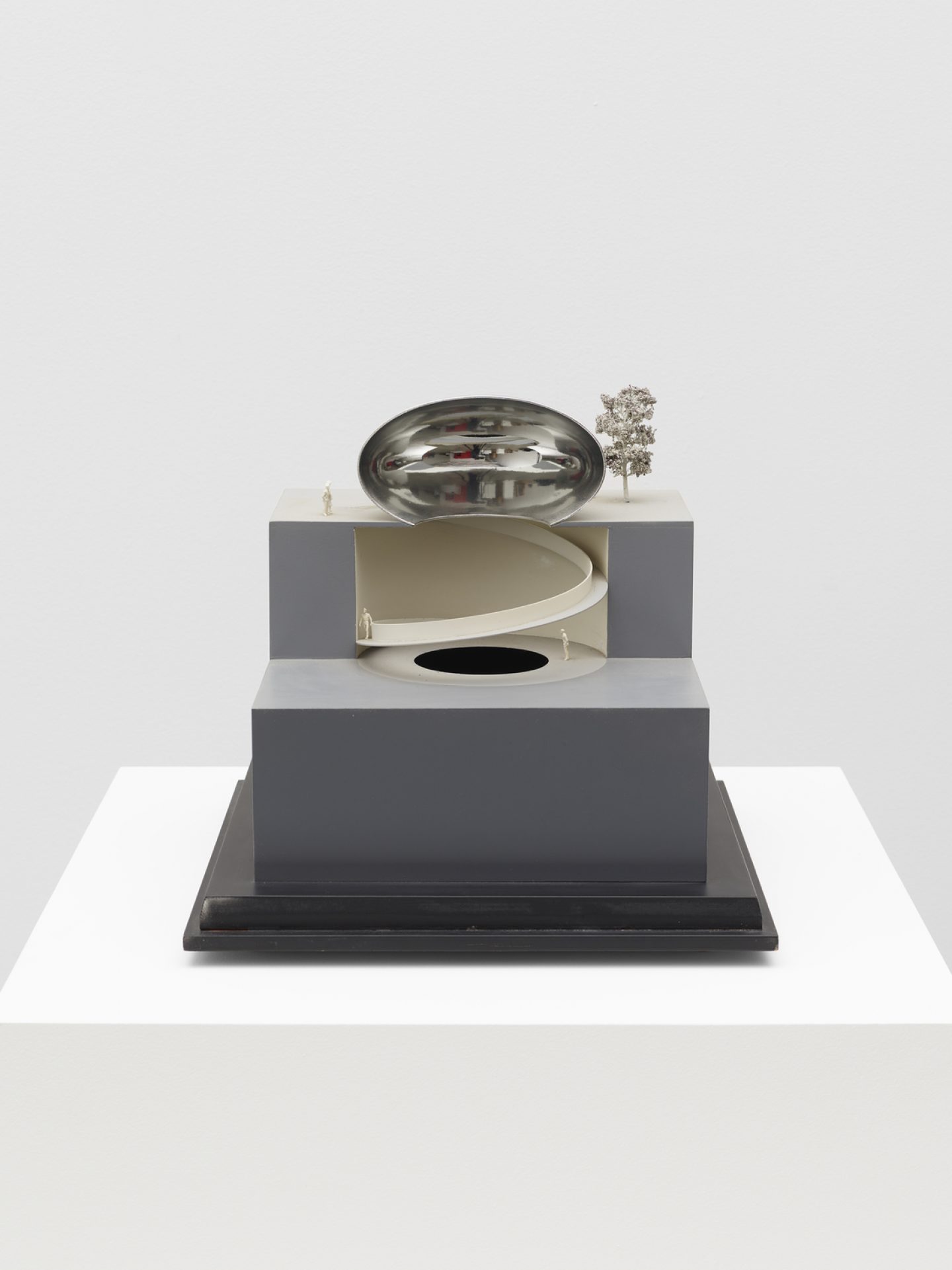
Anish Kapoor , Mirror Heaven / Void Hell, 2005-2006. Model 45 x 45 x 60cm © Anish Kapoor. Courtesy Lisson Gallery
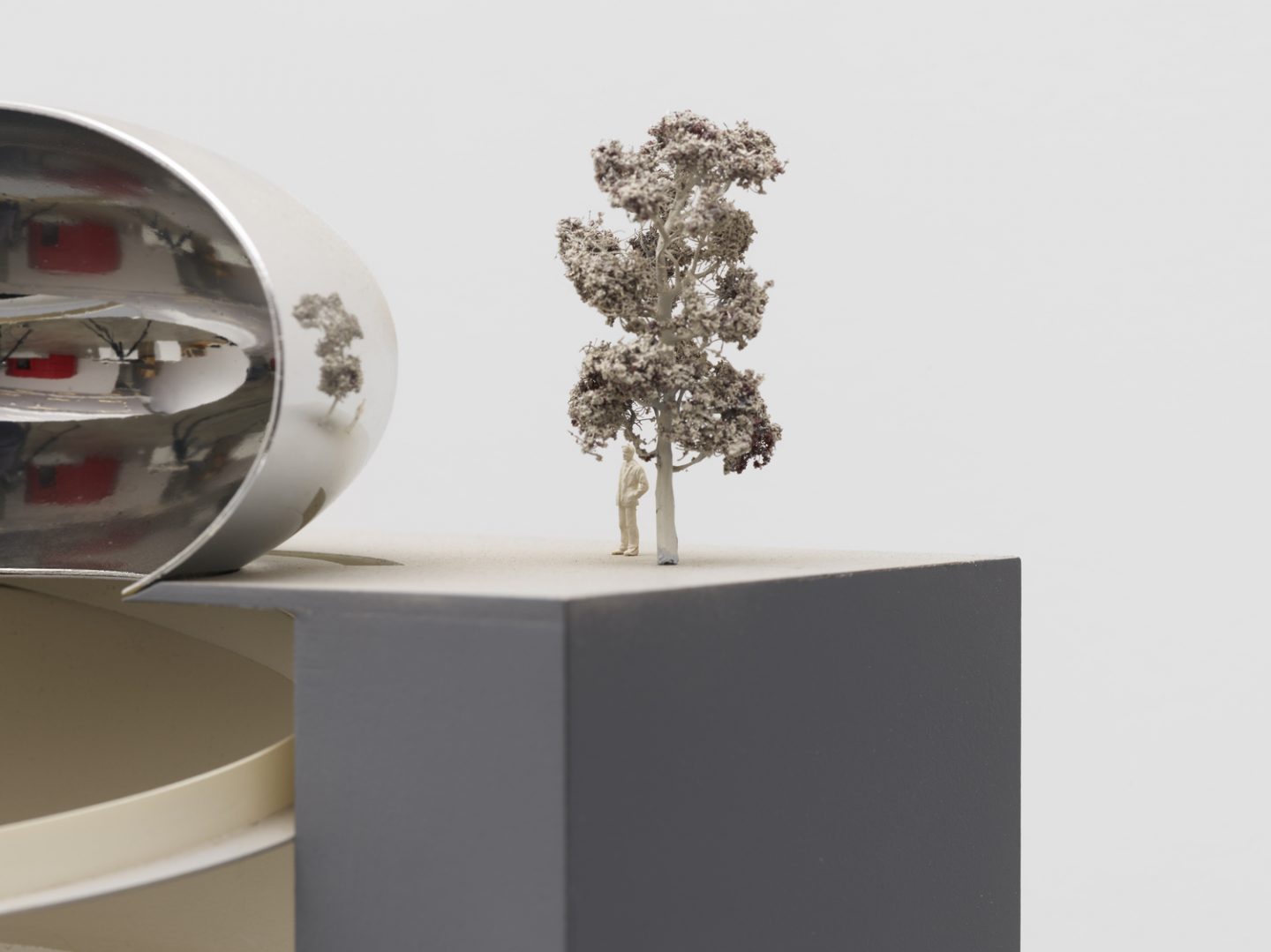
Anish Kapoor , Mirror Heaven / Void Hell, 2005-2006. Model 45 x 45 x 60cm © Anish Kapoor. Courtesy Lisson Gallery
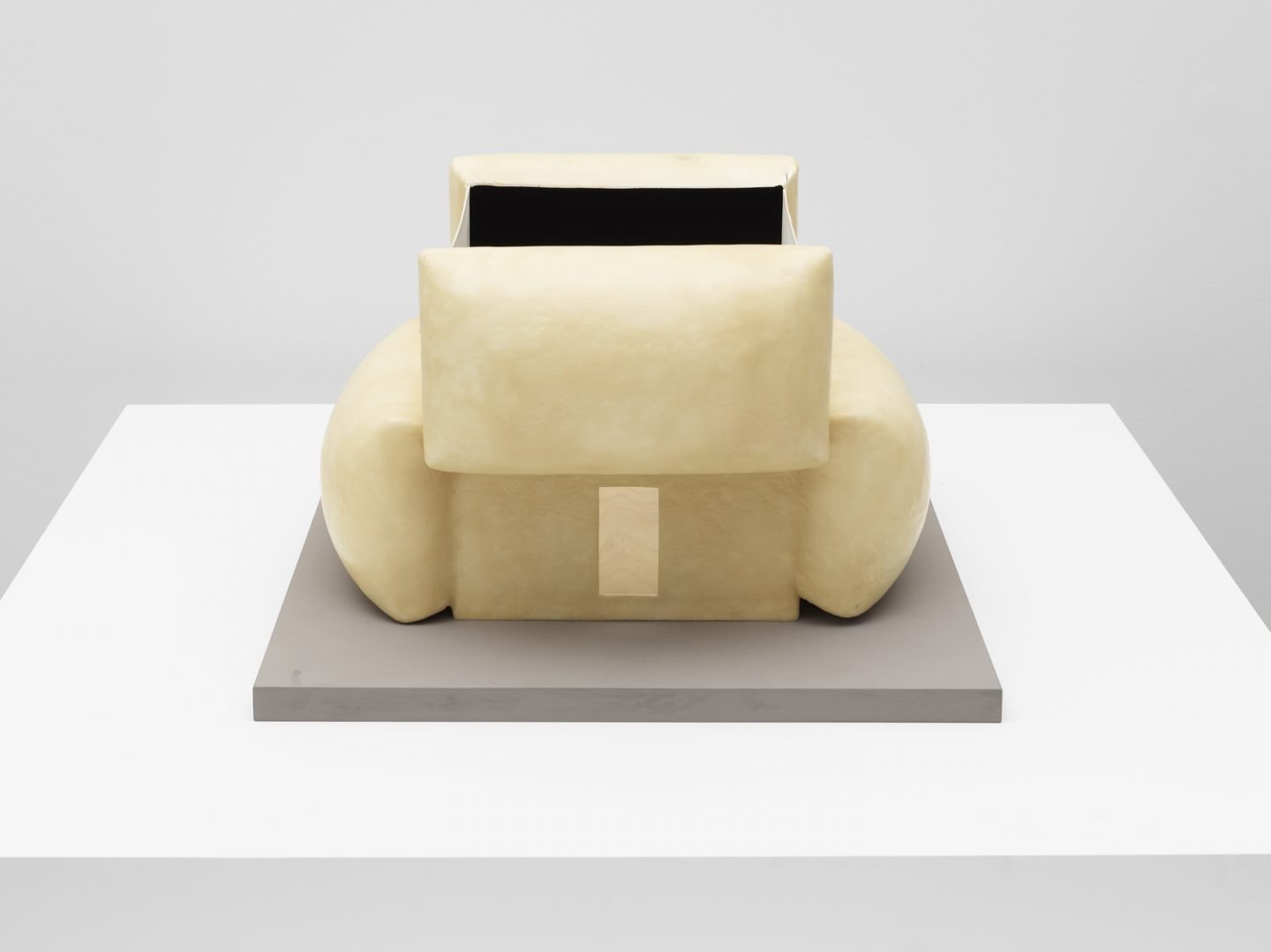
Anish Kapoor , Void Pavilion II, 2016. Wood, fibreglass, and pigment 35 x 55 x 55cm © Anish Kapoor. Courtesy Lisson Gallery
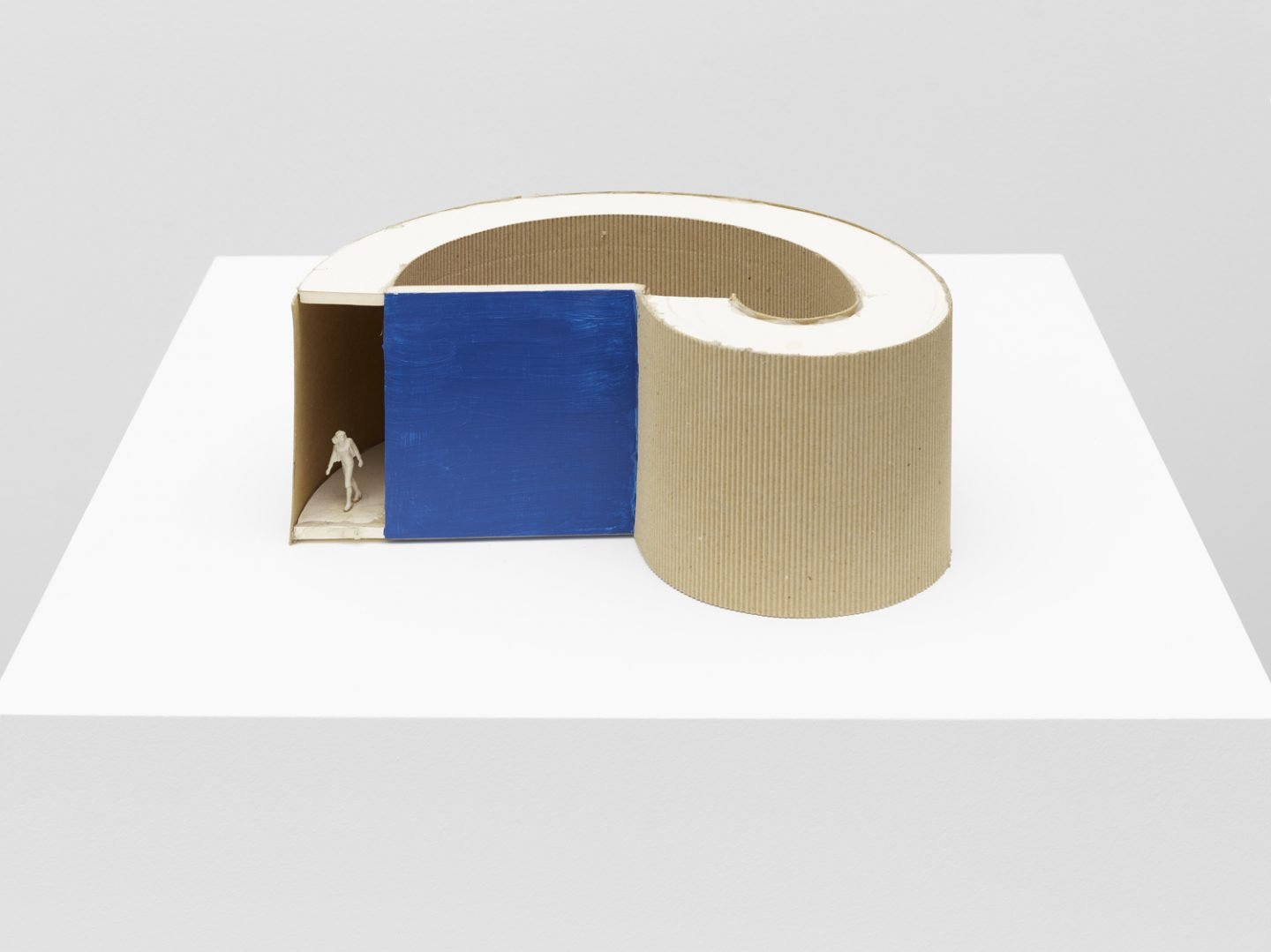
Anish Kapoor, Red/Blue Passage, 1984 . Mixed media (model) 30 x 24cm © Anish Kapoor. Courtesy Lisson Gallery
Pavilions is on show at Lisson Gallery in New York until February 12, 2022. For more information about the exhibition, click here.
All images courtesy Lisson Gallery
